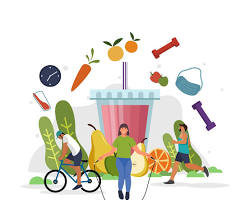Introduction to food festivals and their popularity
Food festivals have become a beloved staple in communities around the world. From tantalizing street food to gourmet delicacies, these events celebrate culinary creativity and cultural diversity. Each festival is a feast for the senses, bringing together flavors, aromas, and vibrant atmospheres that leave attendees eager for more.
But what goes on behind the scenes? How do organizers transform a simple idea into an unforgettable experience? The journey from concept to execution is filled with meticulous planning and passion. In this blog post, we’ll dive deep into the intricate process of organizing food festivals—uncovering everything from selecting vendors to tackling unique challenges along the way. Get ready to explore how these gastronomic gatherings come alive!
Food festivals have taken the culinary world by storm, drawing in crowds eager to savor flavors from around the globe. From local favorites to international delicacies, these events celebrate diverse cuisines and create vibrant atmospheres filled with laughter, music, and mouthwatering aromas.
As people gather under tents adorned with colorful banners, they embark on a gastronomic adventure that tickles their taste buds and brings communities together. The excitement is palpable as chefs showcase their creativity while food lovers explore unique dishes crafted with passion. But what goes on behind the scenes of these festively chaotic gatherings? How are they planned and executed to ensure an unforgettable experience for all attendees? Let’s uncover the fascinating process that transforms an idea into a flavorful reality!
The planning process: from concept to execution
The planning process for a food festival starts with a spark of inspiration. Organizers brainstorm themes that resonate with their audience. It could be regional cuisine, seasonal ingredients, or even a specific culinary trend.
Once the concept is solidified, detailed logistics come into play. This includes creating timelines and budgets. Every element must fit seamlessly together to ensure success.
Next, it’s about assembling the right team. From event coordinators to volunteers, each person plays a crucial role in bringing the vision to life. Collaboration is key at this stage.
Then comes vendor selection. Curating diverse food offerings requires careful vetting of local chefs and restaurants—ensuring quality and variety are maintained throughout the event.
As plans progress toward execution, constant communication becomes vital. Keeping everyone informed helps avoid potential pitfalls as the festival date approaches.
Planning a food festival is no small feat. It begins with a spark of creativity, often inspired by local cuisine or seasonal ingredients. Organizers must brainstorm concepts that resonate with their target audience. This could be anything from celebrating street food to highlighting gourmet delicacies.
Once the concept is established, the next step involves selecting an ideal location. Factors such as accessibility, space for vendors, and ambiance play vital roles in this decision-making process. After securing a venue, it’s time to gather a team of passionate individuals who share the same vision.
Next comes budgeting and funding. Careful financial planning ensures that all aspects of the festival can come together without breaking the bank. Securing sponsors can help reduce costs while also enhancing visibility for both organizers and participants.
With finances in check, marketing strategies need to be developed early on. Social media campaigns are crucial; they create buzz even before tickets go on sale. Engaging visuals and enticing descriptions draw in potential attendees.
Vendor selection is another critical piece of the puzzle. Curating diverse options keeps things exciting for guests while supporting local businesses adds authenticity to the event.
As the date draws closer, logistical details like permits and health regulations must be addressed meticulously; compliance ensures safety and smooth operations during peak hours.
The final countdown involves coordinating schedules with chefs or food artisans involved in demonstrations or tastings—timing everything perfectly impacts visitor experience significantly.
On festival day itself, every detail matters—from signage directing foot traffic to ensuring waste management systems are efficient so that everyone leaves happy (and full).
Food festivals thrive on community spirit—the collaboration between various stakeholders makes magic happen! When successfully executed, these events not only celebrate culinary delights but also bring people together over shared love for good food—and that’s something truly special.
Choosing a location and vendors
Choosing the right location for a food festival is crucial. It sets the stage for everything that follows. Organizers often look for areas with high foot traffic, such as parks or downtown streets. Accessibility can make all the difference.
Next comes selecting vendors. This step requires careful consideration of variety and quality. A diverse lineup keeps attendees excited and satisfied. Local favorites alongside unique international cuisines create an appealing mix.
Building relationships with vendors also matters greatly. Open communication helps establish trust. It’s important to ensure they align with festival values—sustainability, community engagement, and creativity are key factors.
Logistics play a significant role too; ensuring there’s enough space for cooking equipment and seating is vital to avoid chaos on event day. The synergy between location and vendor selection forms the backbone of a successful food festival experience.
Marketing and promotion strategies
Effective marketing is the backbone of any successful food festival. Social media channels play a key role in creating buzz. Instagram and Facebook are perfect for showcasing mouthwatering visuals and videos of vendors’ dishes.
Email marketing also remains powerful. Sending targeted newsletters keeps potential attendees informed about event updates, special guests, and sneak peeks into delicious offerings.
Local partnerships can amplify reach as well. Collaborating with nearby businesses or influencers helps tap into their audiences, generating excitement around the festival.
Interactive contests spark engagement too. Encouraging followers to share their favorite recipes or tag friends creates a sense of community leading up to the event.
Don’t overlook traditional methods like flyers and posters. These visuals draw local attention when placed strategically in high-traffic areas, ensuring that everyone knows what’s happening downtown this weekend!
Unique challenges faced by food festival organizers
Organizing a food festival is no small feat. One of the biggest challenges is managing logistics. From securing permits to coordinating utilities, every detail matters.
Weather can also throw a wrench in the plans. Rain or extreme heat can affect attendance and vendor participation, leading to financial losses.
Another hurdle is vendor relationships. Ensuring that chefs and restaurants are on board with schedules and expectations requires clear communication and flexibility.
Then there’s the issue of crowd control. Anticipating attendee numbers means balancing space constraints while ensuring everyone enjoys their experience safely.
Budget overruns often plague organizers. Unexpected costs can emerge at any stage, making it crucial to have contingency plans in place for unforeseen expenses.
Navigating these complexities demands creativity, resilience, and teamwork from those behind the scenes.
Success stories and lessons learned
Every food festival has its own story of triumph. Some organizers began with humble beginnings, crafting small events that blossomed into regional sensations. One such case is the annual Taco Festival in Austin, Texas. Originally a one-day event, it now spans an entire weekend and attracts thousands.
Lessons emerge from these successes. Flexibility is key; adapting to changing vendor needs or unexpected weather can make or break an experience. Engaging local communities often results in a loyal following.
Feedback loops also play a crucial role. After each event, organizers gather insights from attendees and vendors alike to refine future festivals.
Networking within the industry often leads to collaborations that enhance the festival’s appeal—think celebrity chefs joining forces with local favorites for unique offerings.
The stories behind these festivals reveal not just culinary delights but also resilience and creativity at their finest.
Conclusion: the magic of food festivals
Food festivals are a celebration of culture, creativity, and community. They bring people together to savor unique culinary experiences while promoting local businesses and artisans. The behind-the-scenes efforts that go into planning these events are immense but yield incredible rewards.
From the initial concept to executing a seamless festival day, every detail matters. Choosing the right location can set the tone for success, while carefully selecting vendors enhances the diversity of offerings available to attendees.
Marketing strategies play an essential role in attracting crowds and generating excitement leading up to the event. Social media campaigns, collaboration with food influencers, and engaging community partnerships create a buzz that gets everyone talking.
However, organizing a food festival isn’t without its challenges. Weather unpredictability, logistical hurdles like parking or access issues, and managing vendor relationships all require careful consideration.
Despite these obstacles, many organizers find joy in their successes—transforming ideas into vibrant celebrations where memories are made over shared meals. Each festival tells its own story through flavors experienced by enthusiastic crowds eager for something special.
The magic of food festivals lies not only in delicious dishes but also in moments created around them—a reminder that good food has an extraordinary power to unite us all.






